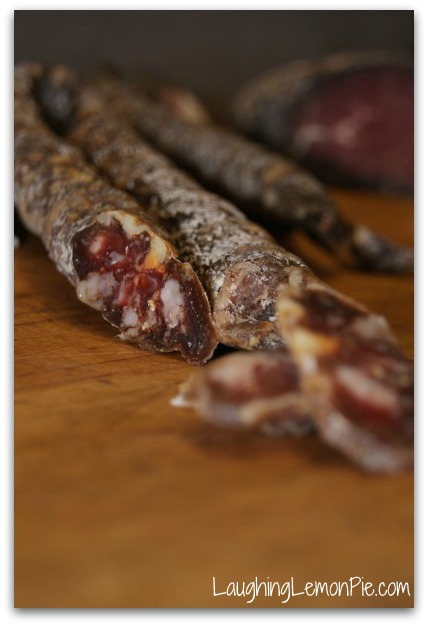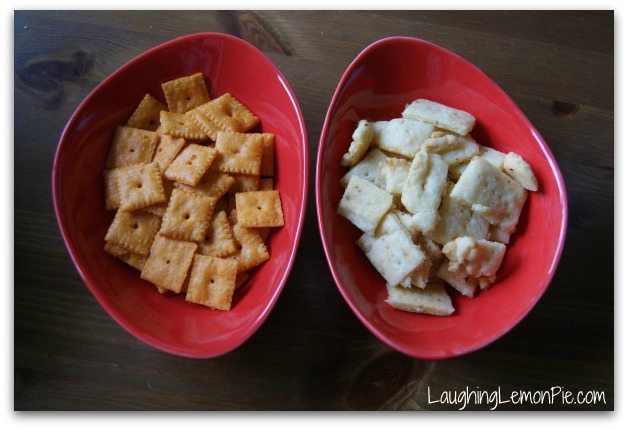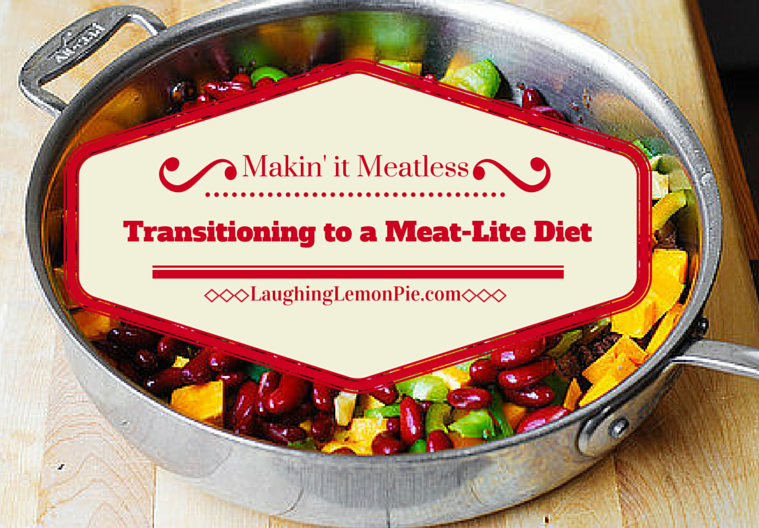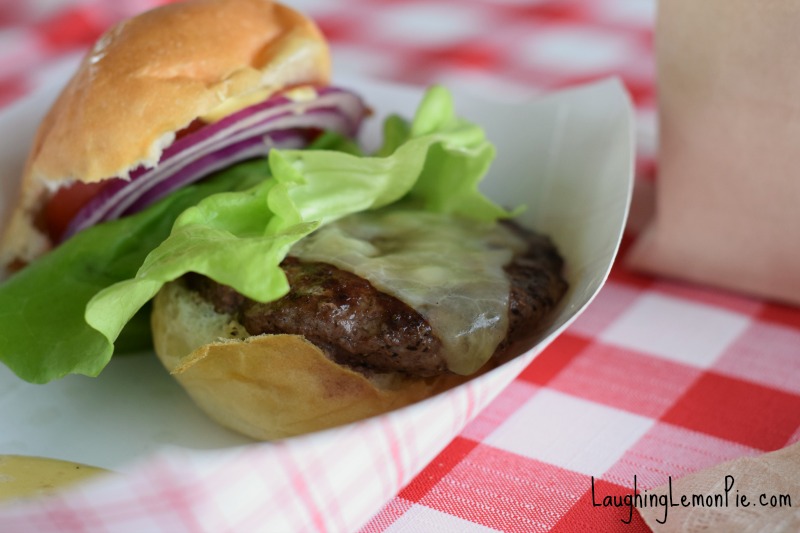The Difference Between Surviving and Thriving Eating Organic on a Budget
There’s a big difference between just surviving for a month on a tight budget and thriving on organic foods while sticking to a thrifty budget.
I recently saw a post—one of many—where the blogger challenged herself to buy organic for a month on the USDA’s “thrifty” budget for her family’s size. She encouraged readers to go check out where their own food budget falls on the USDA’s assessment of average household budgets.
So, I took her up on it.
Turns out, I have been feeding my family on the “thrifty” meal plan for several years now.
It struck me as odd, because while I certainly could spend more on groceries if someone handed me a fistful of money (hellooooo cheese!), I don’t have to. We don’t go without. In fact, we eat well. Really well.
I’ve seen these sorts of challenge posts before, and yes, if you were to suddenly drastically slash the grocery budget I’m used to, I would be all kinds of self-congratulatory if I made it through the month without anyone starving. But the truth is, this is normal for lots of people—voluntarily or otherwise.
And here’s the thing: in my house we eat almost entirely natural or organic foods. Those people who say you can’t go organic on a tight budget? Apparently they are wrong, because the government says I am “thrifty,” and I do it every month, without really even thinking about it.
Below are my top seven tips for eating organic on a budget, but I have more—a lot more—in my new e-book.
Know a sale when you see one
This sounds easy in theory, but riddle me this: At what price should you stock up on whole wheat pasta? What’s a good price for grass fed beef in your area? How much do you pay for organic milk when it’s on sale? (My answers: less than $1 a package, less than $4 a pound, and I’ve paid as little as $0.98 for a half gallon.)
If you know the answers to these questions, then you probably either have a photographic memory or a price book. A price book is basically a record of every price you pay for every item you buy over a long period of time. Once you have at least six weeks or more worth of data, you will start to see patterns (many grocery items have sales cycles of six to twelve weeks). With your price book in hand, you will be able to look at any price and know automatically whether or not it’s a good sale.
There are lots of places to download free price book templates, or you can use a digital price book app like this one. But keeping a price book takes a lot of work and dedication. I have started one several times, and never gotten more than a couple of weeks in!
So if I stink at keeping a price book, how did I know the answers to my own questions up there? Luckily for a lazy bones like me, (who also happens to be math challenged) I found Denver Bargains. Denver Bargains highlights what’s on sale at each area store, but author Carrie Issac takes it one step further by rating each sale from 1 to 5; 1 is a “don’t bother” sort of price and 5 is a “buy as many as you can use and afford” sort of price.
It has made my grocery shopping so much easier. SO much easier.
If you don’t happen to live in the Denver (or Colorado Springs) metro areas, I would suggest googling around to find out if anyone is doing a local version for your area—and then kiss their feet and worship the ground they walk on.
Because knowing when something is actually a really good deal is different than just buying things on sale. The lowest possible price is when you want to stock up and start storing items that you use regularly. And, knowing the rock bottom price will also help you make great shopping decisions at wholesale and bulk stores.
Just as an example, I was considering buying avocados recently at my local Costco, because my daughter could happily eat an entire avocado every day by herself. The avocados there were $5 for a bag of five conventional avocados, so I skipped it—because I know that I can regularly get conventional avocados for $0.50 each on sale, and sometimes even get organic avocados for that price.
Eat less meat
My family regularly eats three or more meatless or meat-lite meals a week. A meatless meal might be a veggie stir fry with tofu; a meat-lite meal might be pinto beans flavored with a ham hock and braised collard greens, or a pasta dish with veggies and one sausage link split between two people.
Reading The Omnivore’s Dilemma a few years ago launched me on my path to becoming an eco-foodie; it really caused me to reconsider my choices when it came to the planet. Then, a couple of years later, I read Food Matters: A Guide to Conscious Eating, which helped me rethink my choices when it comes to my health.
The upshot: we’re eating a LOT less meat.
Ethically raised meat is expensive, there’s just no getting around it, and since I’ve made the decision to only eat ethical meat at home, I’m quite necessarily buying a lot less of it. Thankfully, you can get plenty of high-quality organic proteins from eggs, beans, tofu, and nuts without breaking the bank. Building my meals around these has helped me eat well and still stick to my budget.
Plan Ahead
A weekly meal plan and a shopping list will make a huge difference in the amount of money you spend—and the amount of time you spend at the store. A lot of people complain that they don’t have time to sit down and work out a meal plan ahead of time. But time is money, people! (Said in my best grumpy CEO voice.) It’s up to you to decide which you have more of.
Here’s what my weekly planning session looks like:
- Gather my supplies: grocery list, calendar, coupons, somewhere to write down my meal plan, and my computer for my sales websites and recipes. Also, glance at the fridge and the freezer to see what needs to be used up.
- Check out what’s on sale. I usually start with the proteins and veggies, because that’s what I’ll base dinner around.
- Pick out recipes based on what’s on sale; write down everything I need to buy for each recipe.
- Assign each meal to a day based on what’s going on. This is mainly so I don’t plan something super elaborate to cook on a night I’m not going to get home until 5pm. This is a loose plan, but it helps me.
- Add everything else I might need to the list, including stuff for breakfasts, lunches, and snacks. I don’t really plan out those meals, I just make sure I have our favorites on hand. Also add any items that have hit their rock-bottom price that I want to stock up on.
Buy in season
If you’ve heard it once, you’ve heard it a thousand times: strawberries in January are going to be pretty gross and cost roughly the GDP of a small country.
By buying stuff that’s in season, you’ll be shopping relatively locally. Stuff that’s wildly out of season has to be shipped to your store from far, far away. Strawberries in January are coming from the southern hemisphere. You’ll also be saving money, because shipping from Chile or New Zealand isn’t cheap, and produce follows the same rules of supply and demand as everything else, so when there’s a ton of fresh sweet corn in July, it’s really cheap, and when there’s none in December, it’s pretty expensive.
On top of the economic factor, there’s evidence that just-picked, seasonal produce is actually more nutritious—not to mention more delicious! And, when you are shopping seasonally, you can buy from local farmers, which can also save you money.
Head to Sustainable Table to find out what’s in season now where you live.
By the way, did you know that meat, eggs, coffee, olive oil—just about anything that is grown—has a season? If you’re buying local meat or eggs, you will want to contact your supplier and find out when their high season is; that’s when you’ll get the best deals.
Buy in bulk (when it makes sense)
As I mentioned above, sometimes buying in bulk is a good deal, and sometimes it isn’t.
There’s a bulk store in Longmont, CO whose tagline is “Pay for the product, not the packaging.” When you can buy things like grains, nuts, pasta, beans, spices, etc. from the bulk bins at your local natural foods store or co-op, that’s the concept: buy only the amount you need, and don’t pay for branding or packaging. Most of the time, this is a great way to go. You’re almost always going to find the best per-pound deals on these sorts of dry goods in bulk.
When you’re buying products in bulk from a store like Sams Club or Costco, the lines get a little more blurry. I know that my favorite brand of sharp cheddar cheese and the Costco brand of organic butter are great deals; but as I mentioned above, avocados aren’t. You really need to do your research when shopping at warehouse stores, because they are designed to tempt you, both with prices that seem like great deals and with impulse buys.
Another thing to keep in mind is that it’s not a deal if you don’t use it. Only buy what your family can use. My small family of three isn’t going to eat six cantaloupes before they go bad, no matter how great a deal they are.
Use it all
According to USDA estimates, Americans throw away as much as 25 percent of the food we produce. Make a goal to reduce your own waste with some of these tips:
- Keep a written list of leftovers in your fridge and have a plan to use them up or freeze them before they go bad. I have a small wipe-off board in my kitchen where I write down my weekly meal plan and anything I need to use up in the fridge or freezer.
- Know the real expiration date of products and make a plan to use things before they go off.
- Keep a freezer bag in your freezer for vegetable scraps that can be turned into veggie stock.
- When you cook a whole chicken or large roast with bones, use the remains to make stock or broth.
- If you are juicing a lemon or other citrus fruit for a recipe, grate the peel for zest and freeze it; do the opposite if you’re using the zest for a recipe.
- Freeze small amounts of leftover herbs, wine, coffee, juice, etc. in ice cube trays to use in future recipes.
- One of my favorite ways to use up the inevitable veggies that remain in the crisper at the end of the week is to make “Clean Out The Fridge Vegetable Soup.” It’s incredibly versatile; it will taste different every single time based on what you have left over. I’ve included the “recipe” in my ebook.
- Compost your food scraps (plant matter only—no meat). While you’re not eating it up directly, if you grow a garden, your plants will eat it, and then you will eat them! Ah, the circle of life…
DIY, but admit your limits
I’m going to make a confession here: I don’t think I’m ever going to make my own yogurt unless the zombie apocalypse comes and I can no longer buy my favorite Greek yogurt at the store. My husband is a scientist, and his courses on immunology, parasitological, and microbiology turned him into something of a germaphobe. He has put his foot down: no fermenting milk products on the counter. He doesn’t even like it when I make lacto-fermented pickles!
And that’s OK. My plastic tub of yogurt isn’t going to win me any eco-foodie street cred, but it keeps the peace in my home, and that’s what’s important.
What I’m trying to say is this: no one here is going to look down on you if you decide not to bake your own bread, make your own yogurt and brew your own kombucha. Only you can decide what makes sense to DIY for your family, and you shouldn’t feel guilty even if the answer is “nothing.”
That being said, there are a few things that are pretty darned simple and will save you money. My favorite? Beans. Once I realized that I could cook beans in my crockpot with almost no hands-on effort, I was a changed woman. I gave up (almost entirely) canned beans, mostly because I am concerned about BPA—and the only brand I know of that is BPA-free (Eden Organic) is way more expensive. Dry beans, on the other hand, are pretty darn cheap and easy to make. The only caveat is that you have to plan ahead.
The same is true for my other favorite DIY recipes, sandwich bread and tomato sauce. My favorite brand of organic, whole wheat, locally produced sandwich bread (Rudi’s Organic Bakery) costs, on average, $4 a loaf ($2 when I can find a great sale). I can make a loaf of bread at home for less than $1 a loaf. Of course, it took me years (literally) to find the perfect recipe and master the art of baking bread at 5,000 feet. But now I do it all the time.
A jar of organic spaghetti sauce can cost upwards of $4 as well. But my favorite naked tomato sauce recipe costs just pennies when you make it in the summer to deal with the crazy glut of tomatoes from your yard and then can or freeze it.
Try out a few DIY recipes for some of the products you use most, but then ask yourself honestly if it works for your family. That old adage, “time is money” is old because it’s true. Don’t be afraid to admit that you need some convenience items in your life.
Want to learn more?
This is just the tip of the iceberg. If you’re serious about living like a foodie, eating healthy, organic foods and sticking to your budget, my e-book, The Ultimate Guide to Eating Organic on a Budget has everything you need, including more than 40 pages of ideas, tips, and resources, a step-by-step action plan for organic newbies, and seven bonus recipes, including the ones mentioned above.








Great article, thanks!
Great article, thanks!
Great article, thanks!
Great post, we waste so much food at our house. Trying to cut down.